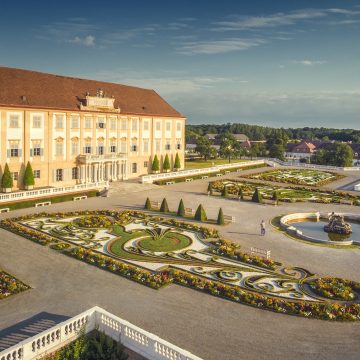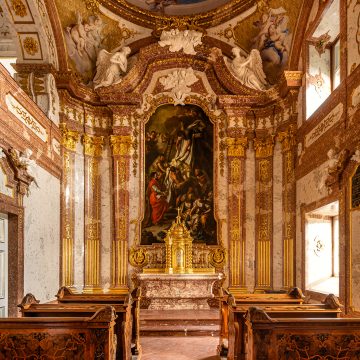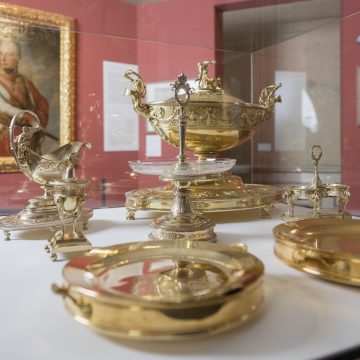In the footsteps of Maria Theresa and her daughters
In the footsteps of Maria Theresa and her daughters along the Danube
The great Maria Theresa is one of the few Habsburgs who, along with Empress Elisabeth, is known beyond the German-speaking borders. She stands for political assertiveness, baroque joie de vivre and palace culture, but also for her immense wealth of children and the associated strokes of fate as well as odd life paths of the individual sons and daughters.
It is the latter whose influence along the Road of Emperors and Kings we take a look at here. How did Maria Theresa and her daughters shape individual stations along the route, what influence did they have on art and culture? And above all, where can we still encounter her secular legacy today? Which places allow us to travel back in time to the 18th century, to a world between courtly intrigues, pastel-colored hoop skirts, glittering banquets and, especially for women, almost insurmountable social constraints? Come with us on a Maria Theresa-like search for traces along the Danube!
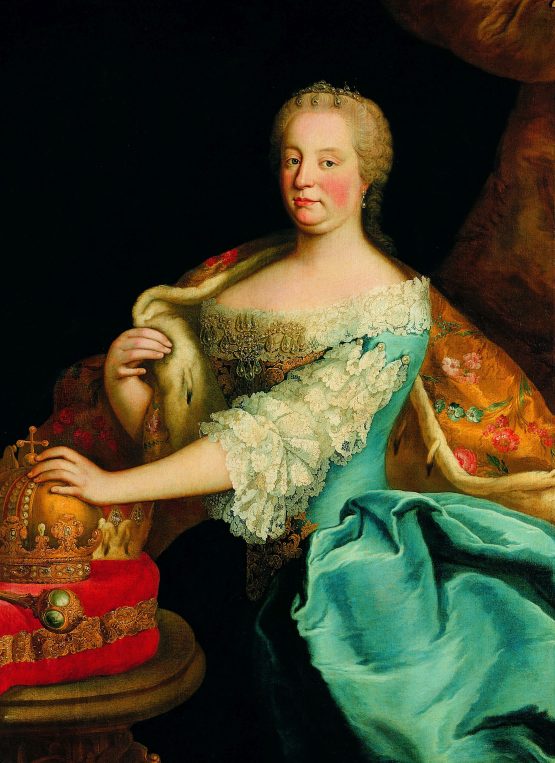
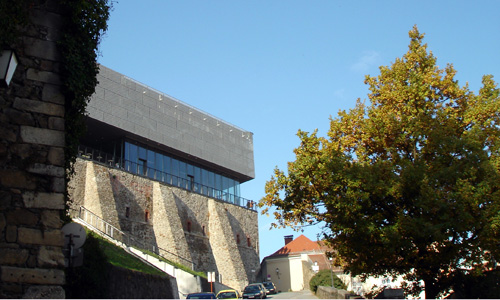
In order to be able to classify the daughters, one should first take a closer look at the mother. Let us begin with Maria Theresa herself: As a role model for her daughters that would be hard to surpass, she steered their marital destinies with an iron hand. At public appearances, the blonde Reserl must have appeared stately-imposing and radiantly beautiful at the same time! The astonished children were certainly told about the glittering pageants of Mama - including the elaborate hereditary homage ceremony in Linz Castle: Already her entry into the city in 1743 was cheered by thousands of Upper Austrians. As part of the time-honored ceremony, the glamorously decorated nobility escorted the empress from Linz Palace to the Office of the Holy Spirit in the city's parish church.
The Austrian hereditary lands, which included Upper and Lower Austria, automatically passed to the new head of state, but with the help of the hereditary homage ritual Maria Theresa affirmed both her own status as sovereign and the now 18 hereditary offices. Curiously, there was even a master hunter who waited with his bloodhound in front of the church. The dog collars used for this purpose over the years are still on display in the Linz Castle Museum. If you would like to take a look at the cultural and regional history of Upper Austria and at the same time walk along Baroque-Habsburg paths, you should visit Austria's largest universal museum!
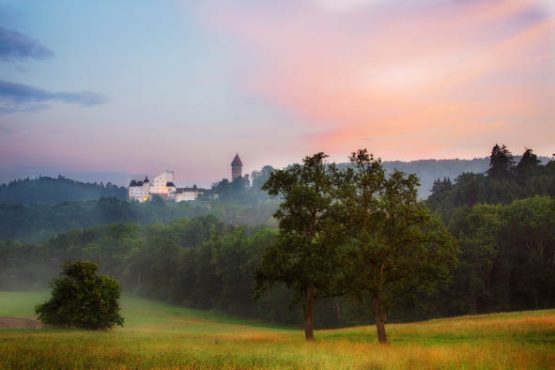
Which noble houses were actually in high favor with Maria Theresa and her family? I recommend a trip to Clam Castle, about two hours from Linz. Its former inhabitants were elevated from the status of counts to barons by diploma from the ruler in 1759, and not without reason. The family is still successful today: instead of stately balls, the Clam family, which incidentally still inhabits the castle, organizes top-class open-air concerts. In July 2022, for example, there will be the now legendary Clam Rock 2022 with Deep Purple, Uriah Heep, John Cale and The Sweet. It's worth checking out the concerts website every now and then! Thanks be to Maria Theresa for the spectacular concert experiences that take place on the Meierhof meadow in front of the castle for up to 10,000 participants.
Those who prefer the museum aspect of a visit to the castle can also simply look at the castle from the inside and outside. The armory, the porcelain collection and the castle pharmacy are unique. The herbs used in the 18th century to treat all kinds of ailments are wonderfully illustrated here.
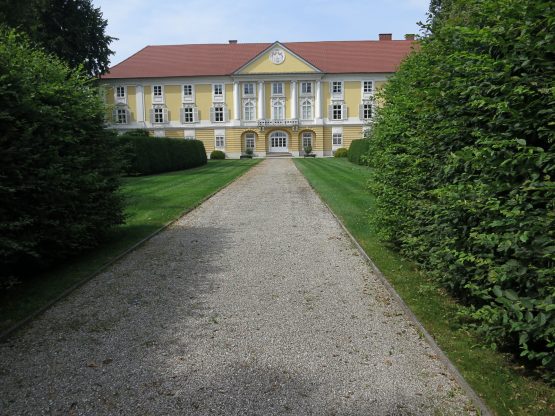
Also not far from Linz is the Starhemberg Castle. The infamous Maria Ernestine Esterházy Starhemberg also sprang from this princely family: Maria Theresa's daughters will certainly have paraded her as a bad example! Finally, the unhappy countess cheated on her husband, Count Ferenc Esterházy de Galántha, tried - now pregnant! - to flee with her lover, Count Schulenburg, which, however, resulted in a forced confinement in a Constance monastery.
After fleeing again and giving her child to an orphanage, as Maria Theresa had ordered, Schulenburg was sentenced to death in Vienna, but was pardoned at the request of her husband (!). After many years in exile, Maria Ernestine reconciled with Esterhazy. In the princely museum in Eferding the exciting life and work of this ancient noble family is illuminated.
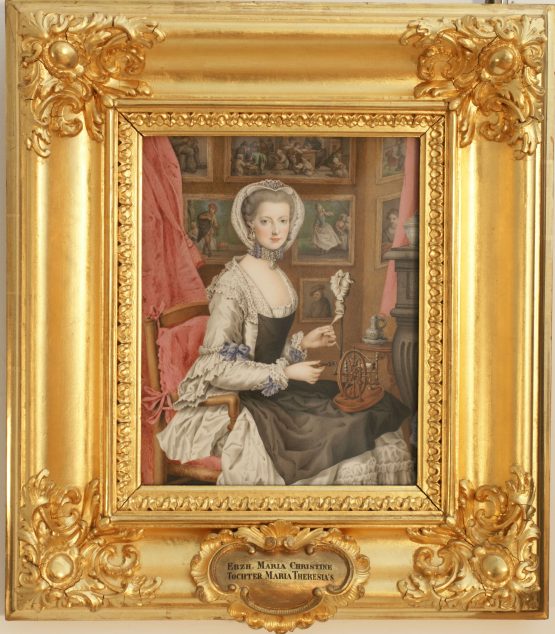
One of Maria Theresa's daughters in particular developed as the ruler envisioned: We are talking about Marie Christine, who was called Mimi by her mother. She was the only one of the daughters who was allowed to marry for love. Was this preference perhaps also due to the fact that they both celebrated their birthdays on the same day (May 13)?
Albert von Sachsen-Teschen married her in 1766 at Hof Palace, Prince Eugene's incomparable Marchfeld palace. The palace chapel, where the wedding ceremony took place, can be explored as part of the palace tour. Since the father, Emperor Franz Stephan I, had died in Innsbruck shortly before, those present all wore black - with the exception of the bride, who, it is said, appeared like a swan among ravens in a white, gem-studded dress.
Hof Palace also has something very special to offer this year: Until November 1, 2022, the special exhibition "Imperial Table Treasures" will showcase fine porcelain and silver from the imperial silver and table chamber, as it was also used on the occasion of Mimi's wedding. How did the imperial family around Maria Theresa dine, and how glamorous was it on special occasions?
The special program is rounded off with an exhibition at neighboring Niederweiden Castle. There, visitors can take a look behind the scenes - namely into the court kitchen, which worked hard to prepare the imperial banquet table.
As a noblewoman in the 18th century, one had the choice between marriage to a possibly disagreeable husband, or entry into a convent. Because: There always had to be a man (father, husband or brother) in the life of the woman, who acted as her guardian in all matters of her life. And who wanted to take care of his unmarried daughter or sister all his life?
Places were often reserved for female infants in noble families in order to safeguard their uncertain future. Did they know whether the little creature would develop into an attractive lady who could be easily sold on the marriage market? Because that was the custom of the time: Parents often negotiated the marriage of their daughter, who was supposed to have the best possible genetic makeup. Capable of childbearing, submissive to the husband, socially acceptable - that's how a good match had to be. Female erudition was usually rejected, as it would spoil the character.
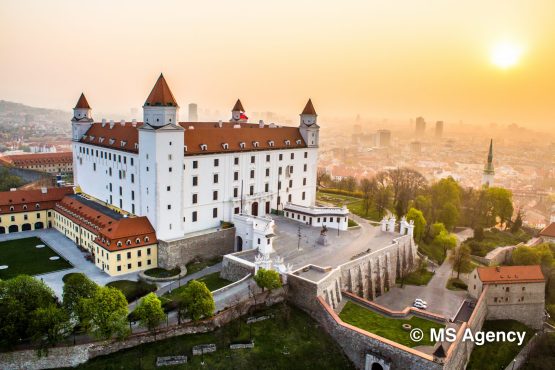
Favorite daughter Mimi and her Albert of Saxe-Teschen - who, by the way, was later to found the Albertina in Vienna - moved into Bratislava after the wedding ceremony, on the evening of April 13. The capital of Slovakia, now known as Bratislava, was still the capital of Hungary in the 18th century. The crème de la crème of the higher social class lived here, and the young couple spent a quiet decade in the Bratislava Castle. Today, in the historical museum located there, there are numerous paintings from times long past to admire. A collection of historical finds and a concert hall, which still functioned as a chapel in the 18th century, give us a glimpse into the history of the castle and thus also into the lives of Mimi and Albert. Those who climb the castle tower are offered a fantastic panoramic view of the city center. In good weather and with a clear view, you can even catch a glimpse of Vienna, which is not so far away. Incidentally, Mimi and Albert took advantage of this proximity to visit the imperial capital on many occasions, making Mimi one of the few daughters of Maria Theresa who was still able to see her mother face to face in her later years.
Fancy some more excursions into the 18th century? No problem: The Gallery of the City of Bratislava in the Mirbach Palace was built between 1768-1770, exactly during the reign of Mimi and Albert. The permanent exhibition with Middle-Eastern European Baroque paintings and sculptures gives an idea of how splendidly one decorated one's own four walls as a nobleman at that time.
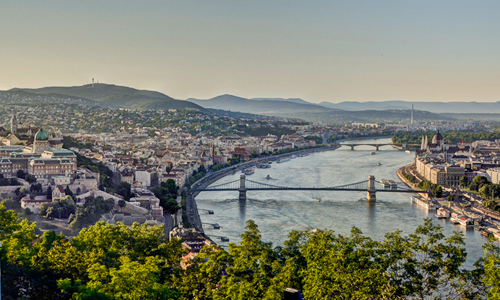
Did the archducal couple ever go to present-day Budapest? Certainly, as can be seen from Maria Theresa's written instructions to her beloved daughter: she instructed Mimi to set a second table for the nobles at court in Ofen (at that time Budapest was still divided into two parts, Pest and Ofen). We have already learned how the table was set in those days from the special exhibitions at the Hof and Niederweiden castles. And where did the Habsburgs hold court in Budapest? Of course in the Buda Castlewhich towers so magnificently over the Danube that a visit to it is a must for all travelers to Budapest.
The Historical Museum(Budapesti Történeti Múzeum) is only one of the many sights of the castle district. Here, of course, is also told from the Habsburg history, after all, Maria Theresa had the residence specially rebuilt in Baroque and provided with a throne room! Since several rooms of the castle fell victim to fire during the Second World War, the focus is now on the successive restoration of important sections. It is not without a certain romanticism to look at the old paintings and photos and think about how Marie Christine and Albert once strode through the chambers and received high-class guests.
Not to be missed is St. Stephen's Hall, originally built in 1902 and now restored! Stephen is considered the first king of Hungary and a national saint, who was of course also honored in baroque times. In the wood-paneled hall, which is decorated with gold all over, one encounters a famous descendant of Marie Christine: The empress (here: queen!) Elisabeth, who is highly revered in Hungary, is depicted as Saint Elisabeth, similar to the altar.
The fact that various Habsburg women also left profound traces in spiritual places of their vast empire will be the seamlessly following topic of the next article!
Text by Julia Meister, www.textrose.de
https://www.blog.der-leiermann.com/vergessene-habsburgerinnen/
"Clam Rock 2022" - Tickets and info at oeticket .
Clam Castle World of Experience
"Countess Maria Ernestine von Starhemberg (1754 - 1813)." In: en.esterhazy.net . Online: http://de.esterhazy.net/index.php/Gr%C3%A4fin_Maria_Ernestine_von_Starhemberg_(1754_-_1813) [24.03.2022].
"Krisztinaváros." In: Wikipedia. Online: https://en.wikipedia.org/wiki/Krisztinav%C3%A1ros [31.03.2022].
"Museum of the Princely Family as well as the City of Eferding". In: starhemberg.com. Online: https://starhemberg.com/museum [24.03.2022].
Mutschlechner, Martin: "Die Erbhuldigung. In: The World of the Habsburgs. Online: https://www.habsburger.net/de/kapitel/die-erbhuldigung#:~:text=When%20a%20Habsburg%20had%20the%20rule,which%20was%20designated%20as%20hereditary%20honor. [23.03.2022].
Neumann, Joseph/Miltner, Franz/Miltner, Jindřich Otakar: Beschreibung der bisher bekannten böhmischen Privatmünzen und Medaillen. I. Abtheilung: Personenmünzen. Prague 1852, p. 60.
Pangels, Charlotte: The Children of Maria Theresa. Life and Fate in Imperial Splendor. Munich 1980.
Praschl-Bichler, Gabriele: Alltag im Barock. Graz/Vienna/Cologne 1995.
Schäfer, Joachim: "Stephen I of Hungary". In: Ecumenical Encyclopedia of Saints. Online: https://www.heiligenlexikon.de/BiographienS/Stephan_I_von_Ungarn.htm [31.03.2022].
"Linz Castle." In: Austria-Forum . Online: https://austria-forum.org/af/Heimatlexikon/Schloss_Linz [22.03.2022]. The text and the bibliographical references are taken by Austria-Forum from the book Österreichisches Burgenlexikon - Schlösser, Burgen und Ruinen (1991) by Georg Clam-Martinic.
Ulm, Benno: "The Castle Museum at Linz. From Castle to Museum." In: Biology Center Linz Special Publications. Sonderband: 150 Jahre Oberösterreichisches Landesmuseum, Oberösterreichischer Musealverein, 1983, pp. 55-70.

